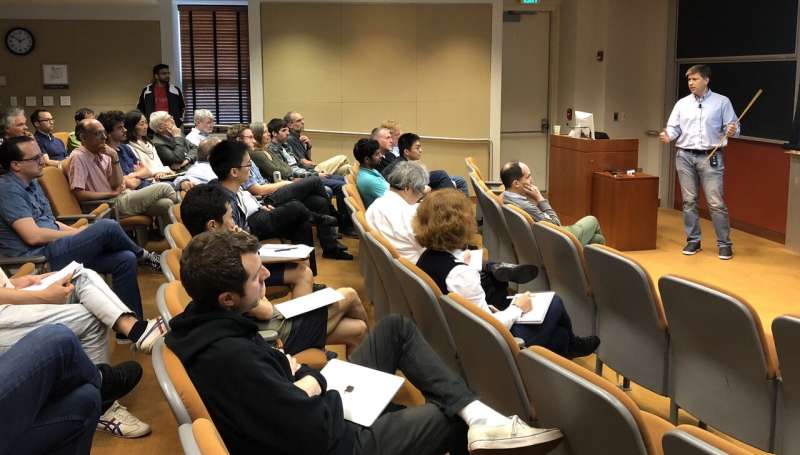Researchers detect evidence of six new binary black hole mergers within LVC data

Scholars at the Institute for Advanced Study (IAS) recently submitted a paper announcing the discovery of six new binary black hole mergers that exceed the detection thresholds defined by the LIGO-Virgo Collaboration (LVC), the group responsible for the first direct observation of gravitational waves on February 11, 2016.
Taking data made public by the LVC, the IAS team applied a unique set of signal processing techniques to detect these cataclysmic events, nearly doubling the total number of binary black hole mergers found during LVC's second observing run (O2) from 7 to 13. A previous paper by the team, released in March 2019, found one new merger in addition to the three identified in the original LVC observing run (O1).
By increasing the number of observations, researchers will be better able to understand the formation, specific properties, evolution, and ultimate demise of these systems through the ripples they send across the fabric of spacetime. The team's results also reveal diversity among these systems, from the rate of spin to the direction of spin relative to the orbit.
These discoveries mark the first time that a group outside of the LVC has been able to analyze gravitational wave data to detect binary black hole mergers not previously identified by the LVC. Tejaswi Venumadhav, an author of the paper and Member in the IAS School of Natural Sciences, stated, "We want to be able to use these methods to squeeze the most out of existing data."
LVC recently announced its third observing run (O3), which began on April 1, 2019. In addition to hardware upgrades implemented between observing runs that allow scientists to peer deeper into the universe, the methods pioneered by IAS researchers now provide another vital tool to maximize the return on data analysis, while increasing the total observable volume within the universe by a factor of two.
"I think one important consequence of this analysis is that it illustrates the importance of making this type of observational data public. Doing so acknowledges that the broader scientific community can bring significant innovations to the table and that the internal analysis of the data does not mark the end of discovery," stated Barak Zackay, Peter Svennilson Member in the School of Natural Sciences.
More information: A link to the paper regarding the team's analysis of data from O2 is available here: arxiv.org/pdf/1904.07214.pdf
The following two papers reflect the team's analysis of data from O1:
arxiv.org/pdf/1902.10341.pdf
arxiv.org/pdf/1902.10331.pdf
Provided by Institute for Advanced Study



















